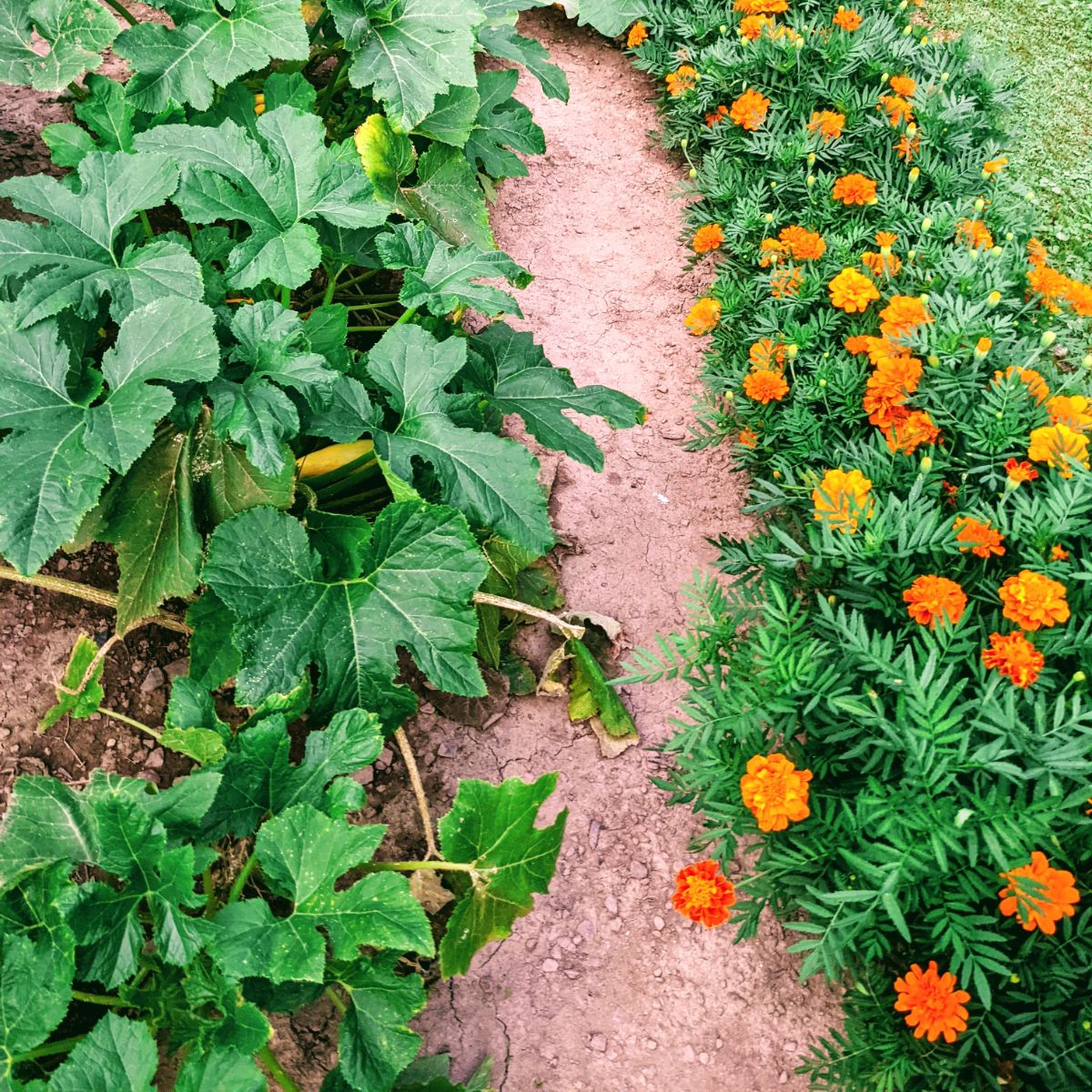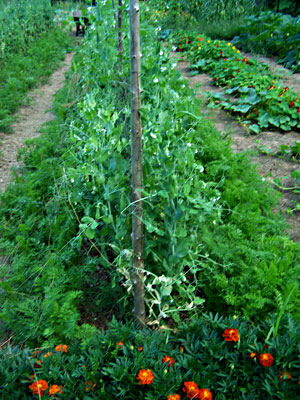The Ultimate Guide To Companion Planting For Vegetable Gardens
The Ultimate Guide to Companion Planting for Vegetable Gardens
Companion planting is a gardening technique that involves planting certain plants together to benefit each other. This can be done to attract beneficial insects, repel pests, improve soil health, or increase yields.
There are many different companion planting combinations that can be used, but some of the most common include:
- Tomatoes and basil: Basil repels tomato hornworms and other pests, and it also improves the flavor of tomatoes.
- Beans and peas: Beans and peas fix nitrogen in the soil, which benefits other plants. They also benefit from the shade of taller plants, such as tomatoes.
- Carrots and onions: Onions repel carrot fly, and carrots help to deter root knot nematodes.
- Cucumbers and marigolds: Marigolds repel cucumber beetles, and cucumbers provide support for marigolds.
- Lettuce and nasturtiums: Nasturtiums attract aphids, which helps to keep them off of lettuce.
These are just a few of the many companion planting combinations that can be used. There are many resources available to help you learn more about companion planting, such as books, websites, and gardening magazines.
Benefits of Companion Planting
There are many benefits to companion planting, including:
- Increased yields: Companion planting can help to increase yields by attracting beneficial insects, deterring pests, and improving soil health.
- Improved soil health: Companion planting can help to improve soil health by increasing the diversity of microorganisms in the soil. This can lead to better drainage, increased water retention, and improved nutrient availability.
- Reduced pest pressure: Companion planting can help to reduce pest pressure by attracting beneficial insects, deterring pests, and providing physical barriers to pests.
- Attraction of beneficial insects: Companion planting can help to attract beneficial insects, such as pollinators and predators. This can help to control pests and improve pollination.
- Improved flavor: Companion planting can help to improve the flavor of vegetables by attracting beneficial insects and deterring pests.
How to Plan a Companion Planting Garden
When planning a companion planting garden, there are a few things to keep in mind:
- Consider the needs of your plants: Different plants have different needs in terms of sunlight, water, and nutrients. Make sure to choose companion plants that have similar needs.
- Consider the height of your plants: Tall plants can shade shorter plants, so it's important to plan your garden so that taller plants don't block the sunlight from shorter plants.
- Consider the pests and diseases that are common in your area: Choose companion plants that will help to deter or control the pests and diseases that are common in your area.
- Experiment: There is no one-size-fits-all approach to companion planting. The best way to learn what works in your garden is to experiment.
Conclusion
Companion planting is a great way to improve the health and productivity of your vegetable garden. By planting certain plants together, you can attract beneficial insects, deter pests, improve soil health, and increase yields. There are many different companion planting combinations that can be used, so you can find one that works for your specific garden.
Do you want to grow a bumper crop of vegetables this year? If so, you need to know which vegetables grow well together. Some vegetables, when planted together, can help each other thrive. For example, basil can help deter pests from tomatoes, and marigolds can help repel nematodes from carrots.
There are many resources available to help you learn about companion planting. One great resource is the Gardenia Inspiration. This website has a comprehensive list of vegetables that grow well together, as well as information on why they are compatible.
If you're new to companion planting, I recommend starting with a few simple combinations. For example, you could plant basil and tomatoes together, or marigolds and carrots. Once you've had some success with these simple combinations, you can start to experiment with more complex planting schemes.
Combining vegetables that grow well together is a great way to boost your garden's productivity and improve the health of your plants. So what are you waiting for? Visit Gardenia Inspiration today to learn more about companion planting!
FAQ of vegetable plants that grow well together
Question 1: What are some good companion plants for tomatoes?
Answer: Tomatoes are a popular vegetable to grow in the garden, and there are many good companion plants that can help them thrive. Some of the best companion plants for tomatoes include:
- Basil: Basil helps to repel tomato hornworms, which are a common pest of tomatoes.
- Marigolds: Marigolds help to repel nematodes, which are soil-dwelling pests that can damage tomato roots.
- Chives: Chives help to improve the flavor of tomatoes and also repel aphids.
- Lettuce: Lettuce helps to suppress weeds and also provides shade for the roots of tomatoes.
- Beans: Beans fix nitrogen in the soil, which can benefit tomatoes.
Question 2: What are some vegetables that should not be planted together?
Answer: There are a few vegetables that should not be planted together, as they can compete for nutrients or water, or even attract pests. Some of the vegetables that should not be planted together include:
- Corn and tomatoes: Corn and tomatoes have different water needs, so planting them together can lead to problems with moisture.
- Cabbage and cauliflower: Cabbage and cauliflower are susceptible to the same pests, so planting them together can make it easier for pests to spread.
- Beans and peas: Beans and peas fix nitrogen in the soil, so planting them together can lead to nitrogen overload.
- Potatoes and tomatoes: Potatoes and tomatoes are susceptible to the same diseases, so planting them together can increase the risk of disease transmission.
Question 3: How close should vegetable plants be planted together?
Answer: The ideal spacing for vegetable plants will vary depending on the specific type of plant, but in general, you should plant vegetable plants about 18-24 inches apart. This will give the plants enough space to grow and develop without competing for resources.
Question 4: Do vegetables need to be planted in pairs?
Answer: No, vegetables do not need to be planted in pairs. However, planting vegetables in pairs can help to attract beneficial insects, suppress weeds, and improve the overall health of your garden.
Question 5: What are some other benefits of companion planting?
Answer: In addition to the benefits mentioned above, companion planting can also help to:
- Improve the flavor of vegetables
- Increase yields
- Attract pollinators
- Repel pests
- Reduce the need for pesticides
Image of vegetable plants that grow well together
- Tomatoes and basil: These two plants are a classic companion planting combination. Basil helps to deter pests that can damage tomatoes, and tomatoes provide a trellis for basil to climb.
- Carrots and onions: Carrots and onions have different root systems, so they don't compete for water or nutrients. Onions also help to repel carrot flies.

- Beans and corn: Beans fix nitrogen in the soil, which benefits corn. Corn provides a trellis for beans to climb.

- Cucumbers and marigolds: Marigolds help to repel cucumber beetles, which can damage cucumbers.

- Peas and lettuce: Peas and lettuce have different growing habits, so they don't compete for space. Peas also provide shade for lettuce, which can help to prevent it from bolting.

Post a Comment for "The Ultimate Guide To Companion Planting For Vegetable Gardens"